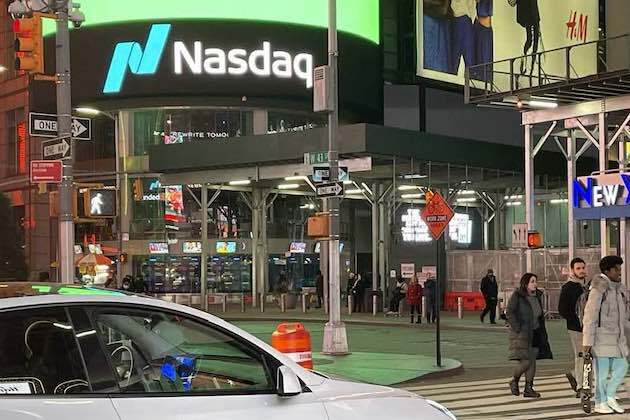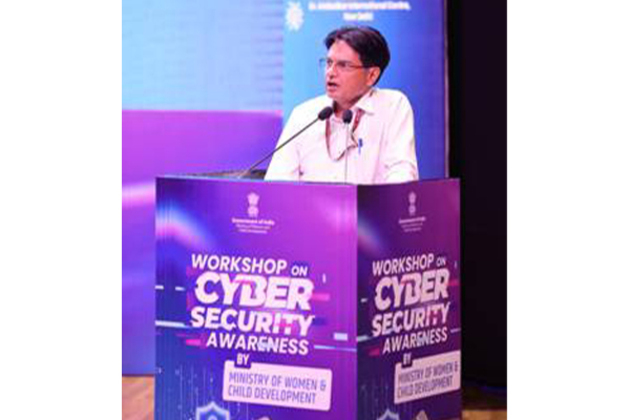How to combat the unethical and costly use of deepfakes
The Conversation
23 Jun 2022, 00:08 GMT+10

Deepfakes are video, audio and image content generated by artificial intelligence. This technology can produce false images, videos or sounds of a person, place or event that appear authentic.
In 2018, there were approximately 14,698 deepfake videos circulating online. Since then, the number has soared through the popularity of deepfake apps like DeepFaceLab, Zao, FaceApp and Wombo.
Deepfakes are used in several industries, including filmmaking, video games, fashion and e-commerce.
However, the malicious and unethical use of deepfakes can harm people. According to research by cybersecurity firm Trend Micro, the "rise of deepfakes raises concern: It inevitably moves from creating fake celebrity pornographic videos to manipulating company employees and procedures."
Read more: The use of deepfakes can sow doubt, creating confusion and distrust in viewers
Increased vulnerabilities
Our research found that organizations are increasingly vulnerable to this technology and the costs of this type of fraud can be high. We focused on two public case studies using deepfakes that targeted CEOs and, to date, have estimated losses amounting to US$243,000 and US$35 million respectively.
The first case of fraud occurred at a British energy firm in March 2019. The chief executive officer received an urgent call from his boss, the chief executive of the firm's German parent company, asking him to transfer funds to a Hungarian supplier within an hour. The fraud was presumably carried out using a commercial voice-generating software.
The second case was identified in Hong Kong. In January 2020, a branch manager received a call from someone whose voice sounded like that of the director of the company. In addition to the call, the branch manager received several emails that he believed were from the director. The phone call and the emails concerned the acquisition of another company. The fraudster used deep voice technology to simulate the director's voice.
In both cases, the firms were targeted for payment fraud using deepfake technology to mimic individuals' voices. The earlier case was less convincing than the second, as it only used voice phishing.
Opportunities and threats
Forensic accounting involves "the application of specialized knowledge and investigative skills possessed by [certified public accountants] to collect, analyze and evaluate evidential matter and to interpret and communicate findings in the courtroom, boardroom, or other legal or administrative venue."
Forensic accountants and fraud examiners - who investigate allegations of fraud - continue to see a rise in deepfake fraud schemes.
One type of deepfake fraud schemes is known as synthetic identity fraud, where a fraudster can create a new identity and target financial institutions. For instance, deepfakes enable fraudsters to open bank accounts under false identities. They use these fabricated identities to develop a trust relationship with the financial institution in order to defraud them afterwards. These fraudulent identities can also be used in money laundering.
Websites and applications that provide access to deepfake technologies have made identity fraud easier; This Person Does Not Exist, for example, uses AI to generate random faces. Neil Dubord, chief of the police department in Delta, B.C., wrote that "synthetic identity fraud is reportedly the fastest-growing type of financial crime, costing online lenders more than $6 billion annually."
Large datasets
Deepfakes can enhance traditional fraud schemes, like payment fraud, email hacking or money laundering. Cybercriminals can use deepfakes to access valuable assets and data. More specifically, they can use deepfakes to gain unauthorized access to large databases of personal information.
Combined with social media platforms like Facebook, deepfakes could damage the reputation of an employee, trigger decreases in share values and undermine confidence in a company.
Forensic accountants and fraud investigator need to recognize red flags related to deepfakes and develop anti-fraud mechanisms to prevent these schemes and reduce the associated loss. They should also be able to evaluate and quantify the loss due to a deepfake attack.
In our case studies, deepfakes used the voices of senior management to instruct employees to transfer money. The success of these schemes relied on employees being unaware of the associated red flags. These may include secrecy (the employee is requested to not disclose the request to others) or urgency (the employee is needed to take immediate action).
Curbing deepfakes
Some simple strategies can be deployed to combat the malicious use of deepfakes:
Encourage open communication: speaking and consulting with colleagues and others about anything that appears suspicious are effective tools to prevent fraud schemes.
Learn how to assess authenticity: for example, ending a suspicious call and calling back the number to assess the person's authenticity.
Pause without reacting quickly to unusual requests.
Keep up-to-date with new technologies that helps detect deepfakes.
Enhance certain controls and assessment to verify client identity in financial institutions, such as Know Your Customer.
Provide employee training and education on deepfake frauds.
Cybercriminals may use deepfakes to make their schemes appear more realistic and trustworthy. These increasingly sophisticated schemes have harmful financial and other consequences for people and organizations.
Fraud examiners, cybersecurity experts, authorities and forensic accountants may need to fight fire with fire, and employ AI-based techniques to counter and detect fictitious media.
Authors: Nadia Smaili - Professor in Accounting (forensic accounting), UniversitУТЉ du QuУТЉbec УТ MontrУТЉal (UQAM) | Audrey de Rancourt-Raymond - Assistant researcher, UniversitУТЉ du QuУТЉbec УТ MontrУТЉal (UQAM) 
 Share
Share
 Tweet
Tweet
 Share
Share
 Flip
Flip
 Email
Email
Watch latest videos
Subscribe and Follow
Get a daily dose of Business Sun news through our daily email, its complimentary and keeps you fully up to date with world and business news as well.
News RELEASES
Publish news of your business, community or sports group, personnel appointments, major event and more by submitting a news release to Business Sun.
More InformationFinancial Markets
SectionMeta wins lawsuit in California court over AI use of authors’ books
SAN FRANCISCO, California: A U.S. judge has dismissed a copyright lawsuit filed by 13 authors against Meta Platforms, the company that...
U.S. stocks surge despite Trump rift with Canada
NEW YORK, New York - U.S. President Donald Trump dropped a bombshell on Friday announcing he had terminated trade talks with Canada....
United Steelworkers Union chief slams Trump over IRA move
Federal officials, then-Governor of Indiana Eric Holcomb, union leaders, company representatives, and dozens of guests assembled at...
Rent freeze fears hit NYC banks, landlords as Mamdani leads
NEW YORK CITY, New York: New York City's financial markets reacted sharply this week as shares of local banks and real estate investment...
U.S. markets surge, Dow Jones jumps 404 points
NEW YORK, New York - U.S. stocks surged on Thursday, with Wall Street's major indexes climbing nearly 1 percent as investor optimism...
Job board pioneers CareerBuilder, Monster face bankruptcy
NEW YORK, U.S.: Two giants of the early internet job search era—CareerBuilder and Monster—have formally filed for bankruptcy protection,...
Technology
SectionMeta wins lawsuit in California court over AI use of authors’ books
SAN FRANCISCO, California: A U.S. judge has dismissed a copyright lawsuit filed by 13 authors against Meta Platforms, the company that...
Tesla robotaxi trials begin in Austin
NEW YORK CITY, New York: Elon Musk is taking a big step toward making his long-promised robotaxi dream a reality. Over the weekend,...
Meta unveils Oakley AI glasses as next step in wearable tech push
MENLO PARK, California: Meta is taking another swing at smart eyewear—this time with a sporty edge. The company announced a new partnership...
Confused bot named Alyssia replaces human response on Iranian phones
DUBAI, U.A.E.: British Iranians living in the U.K. are taken aback when they try to reach their families in Tehran on the phone and...
Smartphone Upgrade Made Easy with Bajaj Finserv Insta EMI Card
HT Syndication Pune (Maharashtra) [India], June 28: As technology rapidly evolves, many consumers find themselves eyeing the latest...
Cybersecurity Workshop by Women and Child Development Ministry boosts digital safety, resilience across governance systems
New Delhi [India], June 27 (ANI): The Ministry of Women and Child Development, Government of India, organised a 'Cyber Security Awareness...












